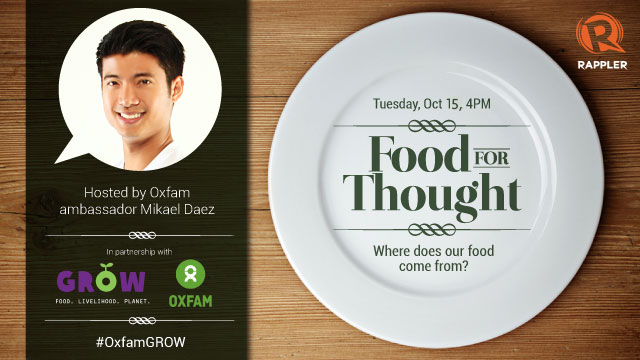SUMMARY
This is AI generated summarization, which may have errors. For context, always refer to the full article.

MANILA, Philippines – Our farmers and fisherfolk are some of the nation’s invisible heroes. The fresh harvest we find in markets and groceries, the hearty meals that fill our plates, the dishes served in restaurants – all these come from the hard work from the people working in farms and in the seas. READ: World’s hungry drop to one in 8 people – UN
When you think of a farmer or a fisherfolk, what immediately comes to mind is a man toiling in the field or in a boat. Unknown to many, women also play an important role in producing the food we eat. In fact, they work longer hours because they also carry out household chores. Yet, female farmers and fisherfolk are rarely heard of or talked about.
The role of women in agriculture is often undervalued. But they are key to increasing overall agricultural productivity. According to a study on agriculture, 3 out of 10 Filipino women are poor, majority of whom are found in rural areas.
In celebration of International Rural Women’s Day on October 15 and World Food Day on October 16, Rappler, in partnership with Oxfam in the Philippines, holds a Google+ Hangout, with support from the Pambansang Koalisyon ng Kababaihan sa Kanayunan (PKKK). READ: Solving the world’s ‘greatest solvable’ problem: Hunger
This Hangout gives us a rare opportunity to get to know real people responsible for the food that we find on our tables every day, and to learn about the kind of lives they lead in the province.
What exactly is the role of women in agriculture? What do they do differently from men?
How does climate change affects food security in the Philippines? With food security a critical issue for survival, how can we prepare for the future of food? READ: SWS: More Pinoy families go hungry in 2nd quarter
Hangout guests:
Rosario “Ka Sario” Mendoza, a fisherfolk from Naic Cavite. She is the chair of NAMAMANGKA, an NGO which promotes the recognition of women as farmers. She launched a micro-enterprise on manufacturing sardines and conducted leadership training sessions for women on domestic violence and abuse.
Leovigilda “Ka Gilda” Agustin, a farmer from Cabanatuan City, Nueva Ecija. She is married, has 3 children and 4 grandchildren. At the age of 62, she still tends to her 2.8 hectares of riceland, as well as goats and ducks in their backyard.
Jing Pura, Gender Justice Coordinator of Oxfam in the Philippines. She has worked in the development sector for 22 years spanning experience in the urban poor communities on community development concerns such as land tenure, childcare, reproductive health and violence against women.
Voltaire Tupaz, Rappler’s multimedia reporter and MovePH partnership manager.
Hosting this Hangout is Mikael Daez, a commercial model, TV host, and actor of GMA-7. He is also a business management graduate from the Ateneo de Manila University. This year, Mikael signed up as one of Oxfam’s ambassadors, the main face behind Oxfam’s #EatBrownRice campaign. READ: 4 reasons to eat brown rice
READ: More stories about hunger
Join us in this conversation on Twitter using the hashtag #OxfamGROW.
– Rappler.com
About Oxfam:
Oxfam is a international non-profit organization with headquarters working in approximately 90 countries worldwide to find solutions to poverty and related injustice around the world. Oxfam Philippines aims to provide more opportunities for women by providing vital tools, advice and financial assistance. They also help people in high-risk areas prepare for natural disasters and get back on track in the aftermath.
About Oxfam’s GROW campaign:
GROW is Oxfam’s global campaign for better ways to grow, manage and consume food. It is a campaign for the billions of us who eat food and over a billion of men and women who grow it, to share solutions for a more hopeful future in which everyone always has enough to eat. To realize the vision of a future where everyone always has enough to eat, people have to change the way they grow, and make practical positive changes in producing, consuming, sharing and managing food and other resources.
Add a comment
How does this make you feel?
There are no comments yet. Add your comment to start the conversation.